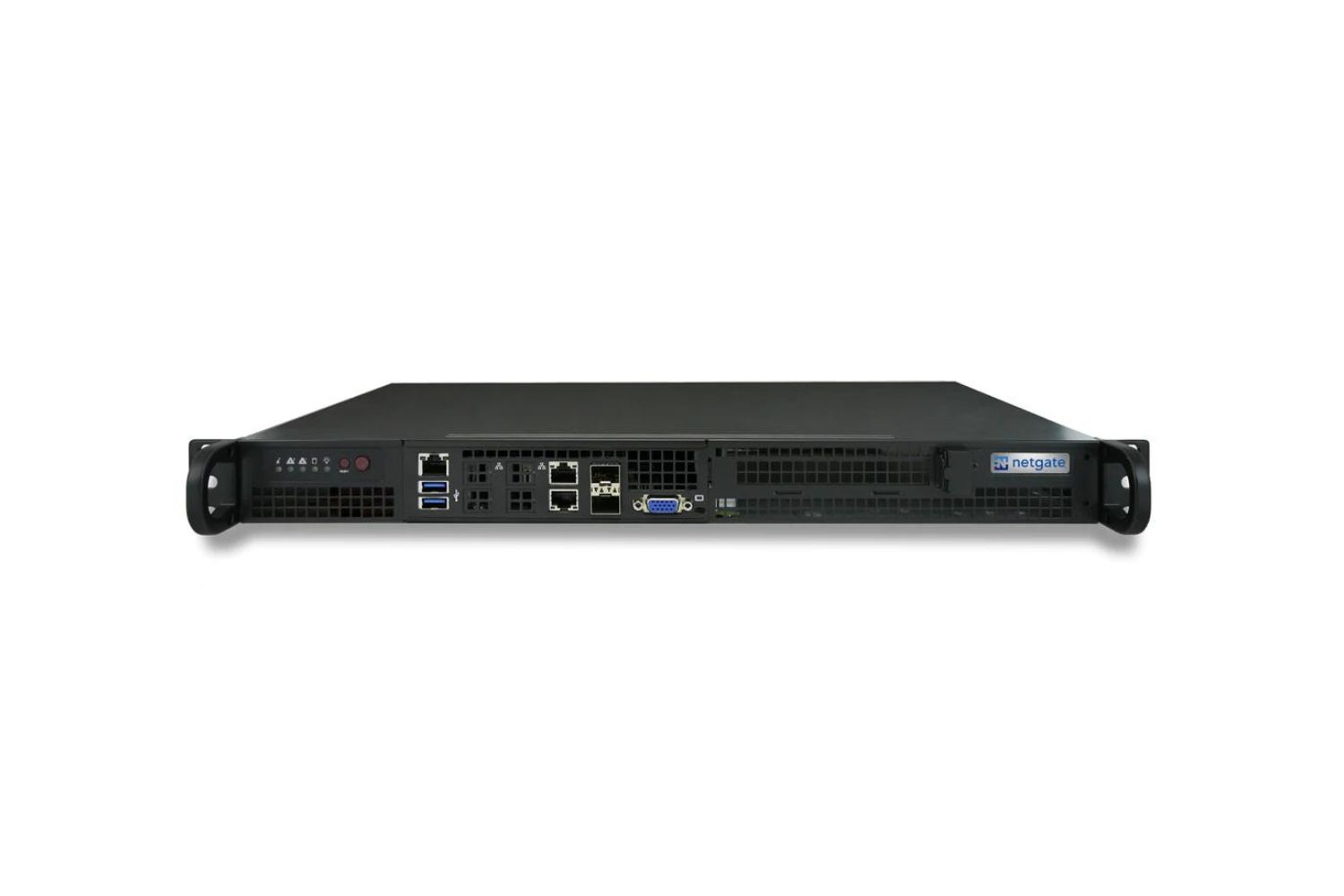Introduction
Welcome to the world of internet security! As technology continues to evolve, so too do the threats that lurk in the digital landscape. In order to protect sensitive data and ensure a safe online experience, various tools and techniques have been developed. Two such solutions that play a crucial role in safeguarding networks are proxy servers and packet filtering firewalls.
Understanding how these two technologies differ is vital for anyone concerned with network security. Whether you’re a cybersecurity professional, a network administrator, or an avid internet user, knowing the distinctions between a proxy server and a packet filtering firewall can help you make informed decisions when it comes to protecting your data.
In this article, we will delve into the world of proxy servers and packet filtering firewalls, exploring their functionalities, advantages, and how they differ from each other. By the end of this article, you will have a clear understanding of these two essential components of network security and how they contribute to keeping your online experience safe.
What is a Proxy Server?
A proxy server acts as an intermediary between a user’s device and the internet. It acts as a go-between, handling requests from clients seeking resources and retrieving them on their behalf. When a user makes a request, the proxy server forwards it to the destination server, receives the response, and then relays it back to the user.
One of the primary functions of a proxy server is to enhance privacy and security. By acting as a middleman, it masks the user’s IP address, making it difficult for websites or other users to track their online activities. This anonymity makes it an effective tool for bypassing content filters or accessing geo-restricted websites.
Additionally, a proxy server can improve network performance by caching frequently accessed resources. When a user requests a resource that has been previously accessed, the proxy server can retrieve it from its cache instead of having to reach out to the destination server. This reduces latency and bandwidth usage, resulting in faster response times for the user.
Proxy servers can be categorized based on their functionality and intended use. Forward proxies, also known as web proxies, are commonly used by individuals to access blocked content or ensure privacy. Reverse proxies, on the other hand, are deployed by businesses to distribute network traffic across multiple servers, improving website performance and providing an additional layer of protection.
Overall, a proxy server acts as a crucial intermediary in the online world, balancing privacy, security, and performance. It offers a range of benefits, making it a valuable tool for individuals and organizations alike.
How Does a Proxy Server Work?
Understanding the inner workings of a proxy server can help demystify its role in the network architecture. When a user initiates a request to access a web resource, the request is first sent to the proxy server rather than directly to the destination server.
The proxy server evaluates the request, examines its headers and content, and determines the appropriate action to take. It then forwards the request to the destination server on behalf of the user. The server processes the request, generates a response, and sends it back to the proxy server.
Upon receiving the response, the proxy server evaluates it and performs necessary actions. It may perform caching, wherein it stores a copy of the resource locally, allowing future requests for the same resource to be served directly from the cache. This caching mechanism helps reduce latency and conserve bandwidth.
Proxy servers can also provide additional services such as content filtering, which allows the server to block or allow certain types of content based on predefined rules. This enables organizations to enforce internet usage policies and protect users from accessing malicious or inappropriate content.
Another powerful capability of proxy servers is load balancing. Reverse proxy servers distribute incoming network traffic across multiple backend servers, optimizing resource utilization and ensuring high availability. This balancing of traffic helps prevent server overloads and improves the overall performance and reliability of websites and applications.
It’s important to note that proxy servers can operate at different layers of the network stack. While most commonly associated with HTTP(S) traffic, modern proxy servers can handle a wide range of protocols, including FTP, SMTP, and DNS. This flexibility makes them adaptable to various network environments and enhances their versatility.
In summary, a proxy server acts as an intermediary between users and destination servers, intercepting requests and handling them on behalf of the user. Through techniques such as caching, content filtering, and load balancing, proxy servers provide improved performance, security, and network management capabilities.
Advantages of Using a Proxy Server
Proxy servers offer a range of advantages that make them a valuable tool for individuals and organizations. Let’s explore some of the key benefits of using a proxy server:
1. Enhanced Privacy and Anonymity: One of the primary advantages of using a proxy server is the increased privacy and anonymity it provides. By masking the user’s IP address, a proxy server helps protect their identity and online activities from being tracked by websites or other users. This is especially useful for bypassing content filters and accessing geo-restricted websites.
2. Improved Security: Proxy servers act as a barrier between the user’s device and the internet, providing an additional layer of security. They can filter out malicious content and prevent access to websites with known security vulnerabilities. By blocking unwanted traffic and acting as a firewall, proxy servers help protect the user’s device and network infrastructure from potential threats.
3. Bandwidth Optimization: Proxy servers can cache frequently accessed web resources, reducing the amount of data transferred over the network. By serving cached content, proxy servers reduce bandwidth usage and improve network performance. This is especially beneficial in environments where multiple users access the same resources, such as in organizations or public Wi-Fi networks.
4. Content Filtering and Access Control: Many proxy servers offer content filtering capabilities, allowing organizations to enforce internet usage policies and restrict access to specific websites or types of content. This ensures compliance with regulations and prevents users from accessing malicious or inappropriate content, enhancing network security and productivity.
5. Load Balancing: Reverse proxy servers can distribute incoming network traffic across multiple backend servers, ensuring optimal resource utilization and high availability. This load balancing capability improves website and application performance, prevents server overloads, and enhances the overall user experience.
6. Geographic Flexibility: Proxy servers with server locations in different geographies can provide users with the ability to access region-specific content. By routing requests through servers located in different countries, users can bypass geo-restrictions and access services and websites that are typically unavailable in their location.
These advantages highlight the value and versatility of using a proxy server. Whether it’s for enhanced privacy, improved security, optimized bandwidth, content filtering, load balancing, or geographic flexibility, proxy servers offer a myriad of benefits for individuals and organizations alike.
What is a Packet Filtering Firewall?
A packet filtering firewall is a network security device that monitors and controls the flow of network traffic based on predefined rules. It operates at the network layer of the OSI model, examining individual packets and determining whether to allow or block them based on various criteria.
Packet filtering firewalls work by inspecting the headers of each network packet that passes through them. They analyze information such as source and destination IP addresses, port numbers, and protocol types to make filtering decisions. This process is often referred to as access control lists (ACLs) or rule-based filtering.
The rules used by packet filtering firewalls define the criteria for allowing or blocking packets. For example, a firewall might have a rule that allows incoming traffic on port 80 (HTTP) but blocks traffic on port 22 (SSH). These rules are typically configured based on security policies or specific network requirements.
Packet filtering firewalls can be implemented in various ways, including as standalone hardware devices or as software installed on routers, switches, or servers. They can be placed at different points within a network infrastructure, such as at the network perimeter or between network segments.
One of the key features of packet filtering firewalls is their ability to perform stateful inspection. Unlike basic packet filtering, which examines individual packets in isolation, stateful inspection looks at the context and history of packet exchanges. By keeping track of the state of network connections, stateful firewalls can make more intelligent decisions and provide better protection against attacks.
Packet filtering firewalls offer several benefits for network security. They provide a first line of defense against unauthorized access attempts, helping to block malicious traffic and protect the network from external threats. By enforcing access control policies, they can prevent unauthorized users from accessing sensitive resources or services.
However, it’s important to note that while packet filtering firewalls are effective at filtering based on basic criteria like IP addresses and port numbers, they have limitations. They cannot inspect the content of packets beyond their headers and therefore may not be able to detect certain types of advanced threats or attacks that use sophisticated evasion techniques.
Overall, packet filtering firewalls play a crucial role in network security by selectively allowing or blocking network traffic based on predefined rules. With their ability to control access, filter malicious traffic, and provide basic protection against external threats, packet filtering firewalls serve as an essential component of a comprehensive network security strategy.
How Does a Packet Filtering Firewall Work?
A packet filtering firewall operates by inspecting individual packets of network traffic and deciding whether to allow or block them based on predefined rules. Let’s explore how a packet filtering firewall functions:
1. Packet Inspection: When a packet arrives at the firewall, it examines the packet’s header, which contains information such as source and destination IP addresses, port numbers, and protocol types. The firewall compares this information against its rules to determine how to handle the packet.
2. Access Control Lists (ACLs) and Rules: Packet filtering firewalls utilize access control lists (ACLs) or rule-based filtering to determine which packets are allowed and which ones are denied. These rules are created based on security policies and network requirements. For example, a rule might allow HTTP traffic on port 80, while blocking all traffic on port 22 to protect against unauthorized SSH access.
3. Allow or Block Decision: Based on the packet’s information and the firewall’s rules, the firewall makes a decision to either allow or block the packet. If the packet matches an allowed rule, it is forwarded to its destination. If it matches a blocked rule or doesn’t meet any allowed rules, it is dropped or rejected.
4. Stateful Inspection: Many packet filtering firewalls employ stateful inspection, which keeps track of the state and context of network connections. This involves maintaining information about established connections to ensure that packets belonging to valid connections are allowed. It helps prevent unauthorized access attempts and provides more sophisticated filtering capabilities.
5. Monitoring and Logging: Packet filtering firewalls often include logging and monitoring features. They can record information about allowed and blocked packets, as well as any suspicious or unauthorized attempts. This logging data is useful for troubleshooting network issues, analyzing potential security breaches, and auditing network activity.
6. Network Placement: Packet filtering firewalls can be strategically placed within a network architecture. They are commonly deployed at the network perimeter, acting as a barrier between the internal network and the outside world. They can also be situated between network segments to control traffic flow within an organization’s network infrastructure.
While packet filtering firewalls provide a fundamental level of security, they do have limitations. They primarily focus on filtering based on IP addresses, port numbers, and protocol types, which may not be sufficient to detect more advanced threats or attacks that use sophisticated evasion techniques. As network security threats evolve, additional security measures, such as intrusion detection and prevention systems (IDPS), are often employed in conjunction with packet filtering firewalls to enhance overall network protection.
In summary, packet filtering firewalls work by inspecting packets of network traffic, applying rules to determine whether to allow or block them, and providing a basic level of security and access control. Their ability to filter and control network traffic helps protect against unauthorized access attempts and forms an essential part of a comprehensive network security strategy.
Advantages of Using a Packet Filtering Firewall
Packet filtering firewalls offer several advantages, making them a valuable tool in network security. Let’s explore some of the key benefits of using a packet filtering firewall:
1. Network Protection: A packet filtering firewall serves as a crucial line of defense against unauthorized access attempts and malicious network traffic. By selectively allowing or blocking packets based on predefined rules, it helps protect the network infrastructure and sensitive resources from external threats.
2. Access Control: Packet filtering firewalls enable organizations to enforce access control policies. By configuring rules, organizations can define which types of traffic are allowed and which ones are blocked, ensuring that only authorized users and services can access specific resources. This helps prevent unauthorized access to sensitive information and resources.
3. Performance Optimization: Packet filtering firewalls can improve network performance by reducing the amount of unwanted or non-essential traffic that reaches the internal network. By filtering out unwanted packets, they free up network bandwidth and resources, resulting in improved network performance and responsiveness.
4. Network Segmentation: Packet filtering firewalls allow organizations to segment their networks and control the flow of traffic between different network segments. By implementing separate rules for each network segment, organizations can enhance security by restricting communication among different parts of the network. This prevents the potential spread of threats or unauthorized access from one segment to another.
5. Low Cost and Simplicity: Packet filtering firewalls are often more affordable and easier to configure compared to other types of firewalls. Their basic filtering capabilities make them a practical choice for small to medium-sized businesses or organizations with limited resources or technical expertise.
6. Transparent to Users: Packet filtering firewalls operate at the network layer and are transparent to users. This means that users can access network resources without needing to install additional software or make changes to their devices. With proper configuration, packet filtering firewalls can protect the network without interfering with normal user operations.
7. Broad Compatibility: Packet filtering firewalls can be implemented on various network devices such as routers, switches, or dedicated firewall appliances. They can support a wide range of protocols and are compatible with different network configurations, making them versatile and adaptable to different network environments.
8. Scalability: Packet filtering firewalls can easily scale to accommodate the needs of growing networks. Additional rules can be defined to handle increased network traffic or new applications without requiring significant changes or upgrades to the firewall infrastructure.
In summary, packet filtering firewalls provide network protection, access control, performance optimization, and network segmentation advantages. Their affordability, simplicity, transparency to users, broad compatibility, and scalability make them a valuable component of a comprehensive network security strategy.
Key Differences Between a Proxy Server and a Packet Filtering Firewall
While both proxy servers and packet filtering firewalls are essential components of network security, they have distinct differences in terms of functionality and purpose. Let’s examine the key differences between a proxy server and a packet filtering firewall:
1. Functionality: A proxy server acts as an intermediary between a user’s device and the internet. It handles client requests, retrieves resources on behalf of the user, and relays the response. In contrast, a packet filtering firewall examines individual packets of network traffic and determines whether to allow or block them based on predefined rules.
2. Traffic Handling: Proxy servers are designed to handle specific types of traffic, such as web requests or specific protocols like HTTP and FTP. They can perform caching, content filtering, and load balancing. Packet filtering firewalls, on the other hand, work at the network layer and filter packets based on IP addresses, port numbers, and protocol types. They control all traffic passing through the firewall, regardless of the application or protocol.
3. Privacy and Anonymity: Proxy servers offer enhanced privacy and anonymity by masking the user’s IP address and encrypting the internet connection. This allows users to bypass content filters and access geo-restricted websites. Packet filtering firewalls do not provide the same level of privacy and anonymity as they primarily focus on filtering and controlling network traffic.
4. Security Features: While both proxy servers and packet filtering firewalls contribute to network security, they have different security features. Proxy servers can act as a firewall by blocking certain types of content or filtering malicious traffic. They also provide an additional layer of security by hiding the user’s IP address. Packet filtering firewalls primarily focus on access control and blocking unauthorized network traffic based on predefined rules.
5. Network Placement: Proxy servers are often placed between the user’s device and the internet, typically within the user’s network or on the user’s device. They control user-specific traffic and provide localized services. Packet filtering firewalls, on the other hand, are typically deployed at the network perimeter or within the network infrastructure to control all traffic entering or exiting the network.
6. Configuration Complexity: Proxy servers can be more complex to configure and manage compared to packet filtering firewalls. Proxy server settings may need to be configured on each client device or centrally managed within the network. Packet filtering firewalls, on the other hand, can be configured at a central point and applied to the entire network infrastructure.
7. Flexibility and Versatility: Proxy servers offer flexibility in terms of accessing geo-restricted content, caching resources, and load balancing traffic. They can support various protocols and applications. Packet filtering firewalls, although more limited in functionality, provide a broader range of network-level control and can be deployed in different network environments.
These key differences highlight the distinct roles and functionalities of proxy servers and packet filtering firewalls within network security. While proxy servers focus on traffic handling, privacy, and specific application-level services, packet filtering firewalls prioritize access control, network-level protection, and filtering based on predefined rules.
Conclusion
In the realm of network security, both proxy servers and packet filtering firewalls play crucial roles in safeguarding networks and protecting sensitive data. While they have distinct functionalities and purposes, they contribute to overall network security in different ways.
A proxy server acts as an intermediary between a user’s device and the internet, providing enhanced privacy, anonymity, and control over web traffic. It offers features such as caching, content filtering, and load balancing, making it a valuable tool for individuals and organizations looking to optimize their online experience.
On the other hand, a packet filtering firewall operates at the network layer and filters network traffic based on predefined rules. It focuses on access control, network-level protection, and traffic filtering, ensuring that only authorized and safe packets are allowed through the network perimeter.
Understanding the key differences between proxy servers and packet filtering firewalls enables individuals and organizations to choose the appropriate solution for their specific needs. Proxy servers are ideal for situations that require privacy, content control, or load balancing, while packet filtering firewalls excel in providing network-level security and access control.
Both proxy servers and packet filtering firewalls are integral components of a comprehensive network security strategy. They work in tandem to provide layered protection, allowing organizations to defend against a wide range of threats and ensure the integrity of their network infrastructure.
Ultimately, the decision to implement a proxy server, a packet filtering firewall, or both, depends on the specific requirements and objectives of the organization or individual. By leveraging the strengths of these technologies, network administrators and security professionals can create a robust and resilient network environment that balances privacy, security, and performance.

























